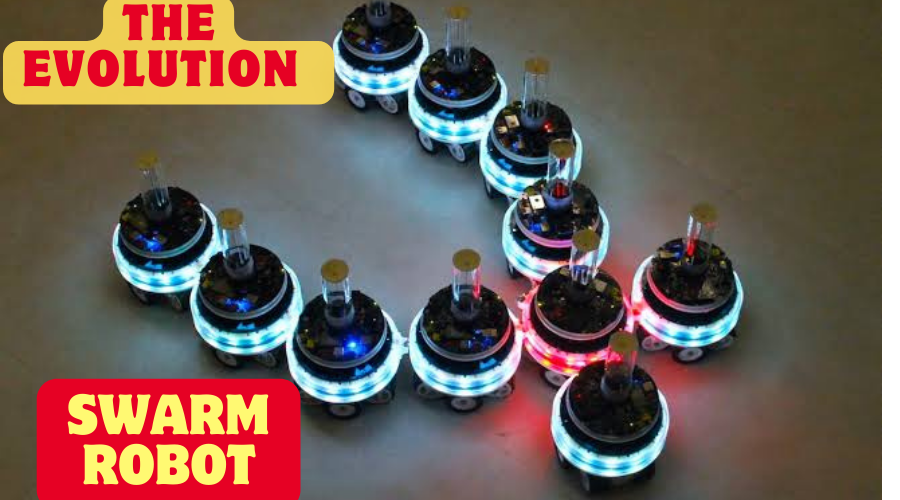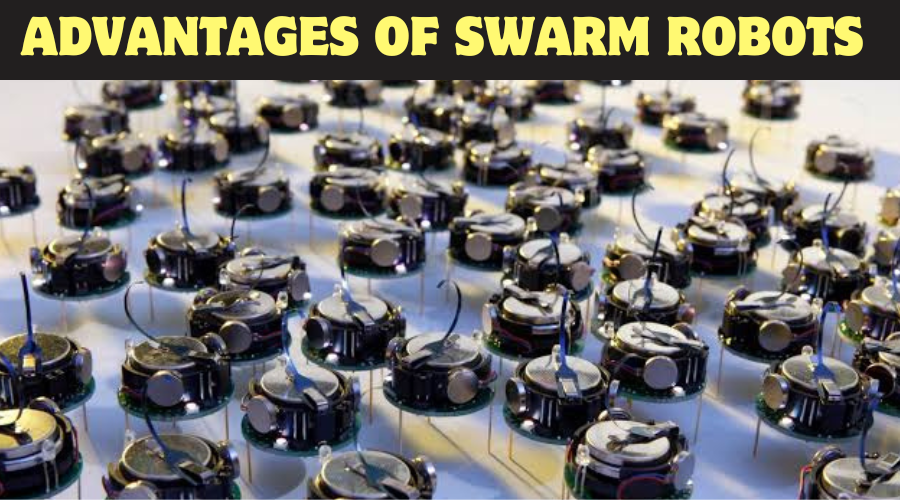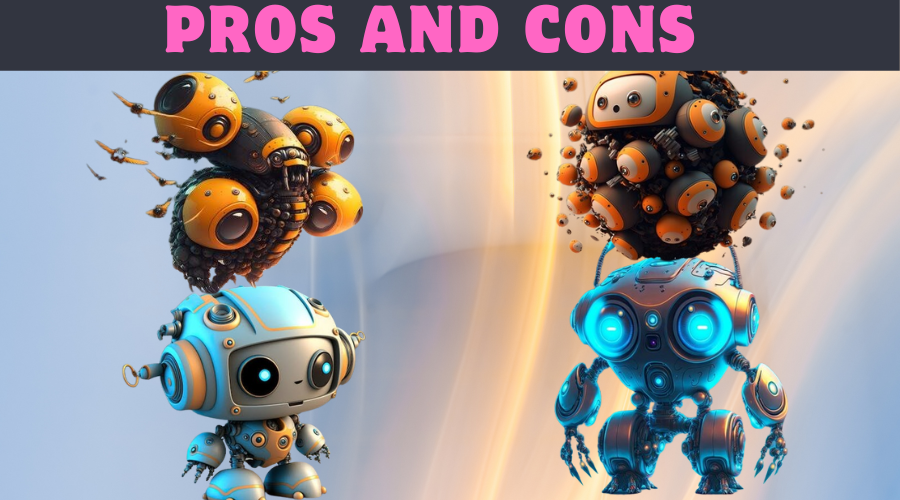Introduction
Swarm Robotics, as we step into the year 2024, is poised to redefine the landscape of robotics. This cutting-edge field, inspired by the collaborative behavior of social insects, has evolved significantly since its inception. In this article, we explore the current state of Swarm Robotics and the exciting developments that are shaping its trajectory in 2024.
The Evolution of Swarm Robotics


Since its conceptualization, Swarm Robotics has come a long way. The emphasis on decentralized control, self-organization, and adaptability has led to the creation of robotic systems that can work collaboratively with remarkable efficiency. As we enter 2024, these foundational principles remain at the forefront, but the technology has advanced, opening new possibilities and applications.
Key Characteristics


In Swarm Robotics, decentralization is key. Unlike traditional robotics with a central control system, swarm robots operate independently yet collaborate seamlessly. They exhibit self-organization, adapting to changing environments without external intervention. This adaptability ensures their efficiency across various applications.
Applications in Various Industries


- Swarm Robotics finds applications in diverse industries.
- In agriculture, these robots can collectively perform tasks like crop monitoring and harvesting.
- In search and rescue operations, they navigate complex terrains efficiently.
- The manufacturing sector benefits from swarm robots working collaboratively in assembly lines, enhancing productivity.
| Applications | Description |
|---|---|
| Medical Swarm Robotics | Application of swarm robotics in the medical field for targeted drug delivery, minimally invasive surgeries, and more. |
| Smart Cities and Infrastructure Maintenance | Utilization of swarm robotics in maintaining and optimizing urban infrastructure, traffic management, and safety. |
Advantages of Swarm Robotics


One of the significant advantages is the increased efficiency achieved through parallel processing. Swarm robots are robust, capable of adapting to malfunctions within the swarm. This decentralized approach also proves cost-effective, as it eliminates the need for a single, expensive central control unit.
Challenges and Limitations
While promising, swarm robotics faces challenges. Communication among robots is critical, and ensuring scalability without compromising efficiency remains a hurdle. Ethical considerations, such as the potential misuse of swarm robots, also need addressing.
Notable Examples
The Kilobot Project and RoboBees are standout examples in swarm robotics. The Kilobot Project focuses on creating a swarm of tiny robots, while RoboBees mimics the collective behavior of bees for various applications.
Future Prospects
- Swarm Robotics finds applications in diverse industries.
- In agriculture, these robots can collectively perform tasks like crop monitoring and harvesting.
- In search and rescue operations, they navigate complex terrains efficiently.
- The manufacturing sector benefits from swarm robots working collaboratively in assembly lines, enhancing productivity.
How Swarm Robotics Different from Traditional Robotics
Centralized vs. decentralized control is a fundamental distinction. Traditional robotics relies on a central control system, whereas swarm robotics distributes control among individual robots, enabling collective decision-making.
Pros and Cons of Swarm Robotics


| Pros | Cons |
|---|---|
| Increased Efficiency | Communication Challenges |
| Robustness | Scalability Issues |
| Cost-Effectiveness | Ethical Considerations |
Swarm Algorithms


Swarm algorithms, such as Ant Colony Optimization and Particle Swarm Optimization, are pivotal in achieving coordination among swarm robots. These algorithms draw inspiration from natural processes to optimize the performance of the swarm.
Environmental Impact


Swarm robotics also contributes to sustainable practices. The collective efficiency and adaptability of swarm robots can lead to reduced energy consumption, making them an environmentally friendly option.
Education and Research in Swarm Robotics
As the field grows, educational programs and research initiatives in swarm robotics become crucial. Academic institutions are increasingly offering specialized courses, and research initiatives aim to push the boundaries of what swarm robotics can achieve.
Criticism and Controversies
Privacy concerns and the potential displacement of jobs are critical issues associated with the rise of swarm robotics. Addressing these concerns responsibly is essential to ensuring the ethical development of the technology.
Collaborative Swarm Systems
Interactions between multiple swarm robotics systems open avenues for collaborative efforts. Understanding how swarms of robots can coordinate and collaborate introduces new possibilities in various domains.
Real-world Success Stories
Several real-world applications showcase the success of swarm robotics. From precision agriculture to disaster response, swarm robotics has proven its mettle in solving complex problems efficiently.
Swarm Robotics Applications
| Industry | Applications |
|---|---|
| Agriculture | Crop Monitoring, Harvesting |
| Search and Rescue | Efficient Navigation in Complex Terrains |
| Manufacturing | Collaborative Assembly in Production Lines |
FAQs of (Swarm Robotics)
What is Swarm Robotics?
Swarm Robotics is a field of robotics that involves the coordination and collaboration of multiple robots, known as a swarm, to accomplish tasks collectively. Inspired by the behavior of social insects like ants and bees, swarm robotics aims to create systems where simple individual agents can work together in a decentralized and self-organized manner.
How does Swarm Robotics differ from traditional robotics?
Traditional robotics typically involves a single, complex robot controlled by a centralized system. In contrast, swarm robotics focuses on the interaction and collaboration of multiple simple robots with minimal individual capabilities. Swarm robotics leverages decentralized control, allowing the swarm to exhibit emergent behaviors through local interactions.
What are the advantages of Swarm Robotics?
- Robustness: Swarm systems are often more robust to failures as the loss of individual robots may not significantly impact the overall performance.
- Scalability: Swarm systems can easily scale up by adding more robots to the swarm, enabling them to handle a wide range of tasks.
- Flexibility: The decentralized nature of swarm robotics allows for adaptability to dynamic and changing environments.
What are the key applications of Swarm Robotics?
- Search and Rescue: Swarms can efficiently explore and navigate complex environments, making them suitable for search and rescue missions.
- Precision Agriculture: Swarms can be used for tasks such as crop monitoring, pollination, and harvesting in agriculture.
- Environmental Monitoring: Swarms of robots can be deployed for monitoring environmental conditions in areas that are challenging for humans to access.
How do robots in a swarm communicate with each other?
Communication in swarm robotics can be achieved through various means, including wireless communication, infrared signals, or even physical interactions. The communication typically involves sharing information about the environment, status, and tasks among the swarm members.
What challenges are associated with Swarm Robotics?
- Coordination: Ensuring effective coordination without centralized control is a significant challenge.
- Robustness to Faults: Designing systems that can tolerate the failure of individual robots is crucial.
- Scalability: As the size of the swarm increases, maintaining efficient communication and coordination becomes more complex.
How is Swarm Robotics different from Multi-Agent Systems (MAS)?
While both involve multiple agents, swarm robotics emphasizes decentralized control and emergent behaviors, often inspired by natural systems. Multi-Agent Systems, on the other hand, may involve agents with more sophisticated decision-making capabilities and explicit communication for task coordination.
Can Swarm Robotics be applied to industrial scenarios?
Yes, swarm robotics has potential applications in industrial scenarios, such as warehouse management, autonomous manufacturing, and logistics. Swarms of robots can collaborate to optimize processes and improve overall efficiency in industrial settings.
What is the role of machine learning in Swarm Robotics?
Machine learning techniques can be applied in swarm robotics to enhance the learning and adaptation capabilities of individual robots. This may include learning from environmental feedback, optimizing task performance, or improving coordination strategies within the swarm.
Are there any real-world examples of Swarm Robotics in action?
Yes, there are ongoing research and development projects as well as some commercial applications of swarm robotics. Examples include autonomous drone swarms for environmental monitoring, robot swarms for warehouse automation, and collaborative underwater robotic systems for marine exploration.
How do swarm robots communicate with each other?
Swarm robots typically communicate through wireless protocols, enabling them to share information and coordinate their actions.
Are swarm robotics systems scalable?
Scalability is a challenge, but ongoing research aims to address this issue, making swarm robotics systems more scalable without compromising efficiency.
What are the ethical considerations in swarm robotics?
Ethical considerations include concerns about privacy, potential misuse of swarm robots, and their impact on employment.
Can swarm robots replace traditional manufacturing processes?
Swarm robots show potential in enhancing traditional manufacturing processes, but complete replacement depends on specific applications and industries.
How can I get involved in research or education in swarm robotics?
Many universities offer specialized courses in robotics and swarm intelligence. You can also explore research opportunities in institutions focusing on robotics and automation.
Conclusion
In wrapping up our exploration of swarm robotics, it’s impossible not to marvel on the ingenuity human beings have poured into creating those collaborative mechanical ensembles. It’s like witnessing a high-tech dance wherein every robotic takes its turn inside the choreography, contributing to a overall performance that transcends the sum of its parts.
Picture a swarm of robots working together, not simply as a set of gears and circuits, but as a community of diligent little helpers, similar to a group of industrious ants building bridges or foraging for sources. There’s a certain allure in imagining those robots no longer just as tools but as partners, navigating the demanding situations in their surroundings with a sense of shared motive. In the sector of swarm robotics, we discover a reflection of our personal human dispositions—our capacity to collaborate, adapt, and triumph over obstacles together. The way those robots speak and coordinate resembles the unspoken language of a close-knit group, each member attuned to the desires of the others. It’s a technological symphony, with each robot gambling its part in harmony. As we undertaking further into this realm of innovation,
we are not just witnessing the evolution of machines; we are witnessing the extension of our human ability to work together toward common goals. The human touch in swarm robotics lies now not just in the wires and algorithms however inside the shared spirit of cooperation that mirrors the first-rate elements of our very own social cloth. In the end, swarm robotics is not just about efficiency and problem-solving; it’s a testament to our ability to infuse even the most advanced technologies with a touch of humanity—a touch that reminds us that, no matter how complex our creations become, they are, at their core, an extension of our human desire to explore, connect, and create together.


TotalInfo4U: Your Ultimate Source for Comprehensive Knowledge

